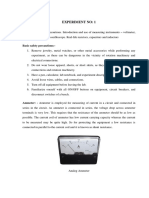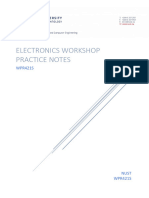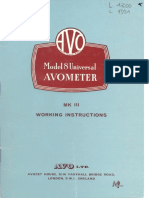0% found this document useful (0 votes)
110 views11 pagesFinal Lab Report With Conclusion
The document outlines two experiments focused on familiarization with electronic lab equipment and studying diode characteristics. The first experiment emphasizes safety, cleanliness, and the use of various apparatus such as multimeters and oscilloscopes, while the second experiment investigates the V-I characteristics of a silicon diode in both forward and reverse bias conditions. Key findings include the cut-in voltage of approximately 0.7V for the diode and the behavior of current flow under different biasing conditions.
Uploaded by
muhammadjoy200Copyright
© © All Rights Reserved
We take content rights seriously. If you suspect this is your content, claim it here.
Available Formats
Download as PDF, TXT or read online on Scribd
0% found this document useful (0 votes)
110 views11 pagesFinal Lab Report With Conclusion
The document outlines two experiments focused on familiarization with electronic lab equipment and studying diode characteristics. The first experiment emphasizes safety, cleanliness, and the use of various apparatus such as multimeters and oscilloscopes, while the second experiment investigates the V-I characteristics of a silicon diode in both forward and reverse bias conditions. Key findings include the cut-in voltage of approximately 0.7V for the diode and the behavior of current flow under different biasing conditions.
Uploaded by
muhammadjoy200Copyright
© © All Rights Reserved
We take content rights seriously. If you suspect this is your content, claim it here.
Available Formats
Download as PDF, TXT or read online on Scribd
/ 11









































































































